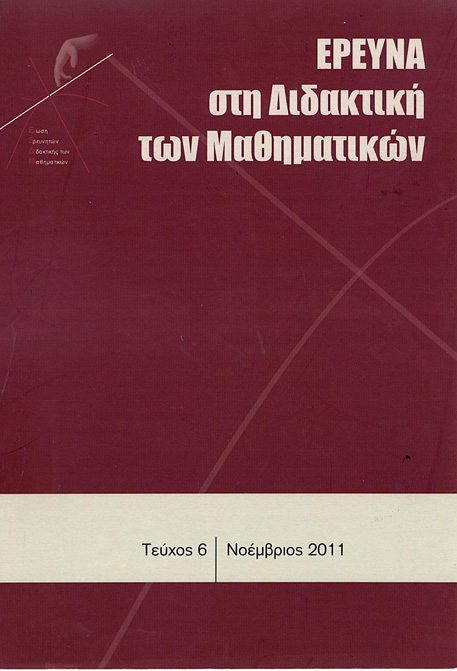Οι διαισθητικές αντιλήψεις των παιδιών Νηπιαγωγείου, Δημοτικού και Γυμνασίου στο πρόβλημα του αθροίσματος των δύο ζαριών με τη βοήθεια ενός μικρόκοσμου

Περίληψη
Τα παιδιά από νεαρή ηλικία οικοδομούν διαισθητικές αντιλήψεις για τις πιθανότητες, οι οποίες είναι προσαρμόσιμες μέσω κατάλληλων μαθησιακών παρεμβάσεων. Οι ηλεκτρονικοί υπολογιστές με τη δυνατότητα παραγωγής τυχαίων αριθμών και δυναμικών αναπαραστάσεων παρέχουν νέες δυνατότητες στην μάθηση των στοχαστικών εννοιών. Στην εργασία παρουσιάζεται μελέτη περίπτωσης σχετικά με την επίδραση ειδικά σχεδιασμένου λογισμικού παιχνιδιού-μικρόκοσμου στην ανάπτυξη διαισθητικών αντιλήψεων για την έννοια της πιθανότητας. Ο προτεινόμενος μικρόκοσμος βασίζεται στο πρόβλημα του αθροίσματος των δύο ζαριών και η μελέτη της επίδρασης του αφορά σε παιδιά του Νηπιαγωγείου, του Δημοτικού και του Γυμνασίου. Τα πειραματικά ευρήματα υποστηρίζουν τη μαθησιακή αξία του προτεινόμενου μικρόκοσμου στη διάγνωση πρωτογενών και τη διαμόρφωση δευτερογενών διαισθητικών αντιλήψεων για πιθανολογικές έννοιες στο πλαίσιο ελκυστικής μαθησιακής δραστηριότητας.
Λεπτομέρειες άρθρου
- Πώς να δημιουργήσετε Αναφορές
-
Φεσάκης (Giorgos Fesakis) Γ., Καφούση (Sonia Kafoussi) Σ., & Μαλισιόβα (Eleftheria Malisiova) Ε. (2017). Οι διαισθητικές αντιλήψεις των παιδιών Νηπιαγωγείου, Δημοτικού και Γυμνασίου στο πρόβλημα του αθροίσματος των δύο ζαριών με τη βοήθεια ενός μικρόκοσμου. Έρευνα στη Διδακτική των Μαθηματικών, (6), 11–37. https://doi.org/10.12681/enedim.15033
- Ενότητα
- Άρθρα

Αυτή η εργασία είναι αδειοδοτημένη υπό το CC Αναφορά Δημιουργού 4.0.
Οι συγγραφείς των άρθρων που δημοσιεύονται στο περιοδικό διατηρούν τα δικαιώματα πνευματικής ιδιοκτησίας επί των άρθρων τους, δίνοντας στο περιοδικό το δικαίωμα της πρώτης δημοσίευσης. Άρθρα που δημοσιεύονται στο περιοδικό διατίθενται με άδεια Creative Commons BY και σύμφωνα με την άδεια μπορούν να χρησιμοποιούνται ελεύθερα, με αναφορά στο/στη συγγραφέα και στην πρώτη δημοσίευση.

